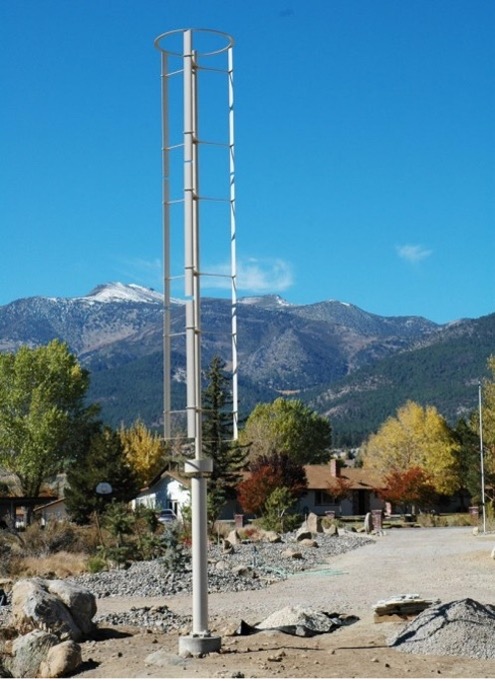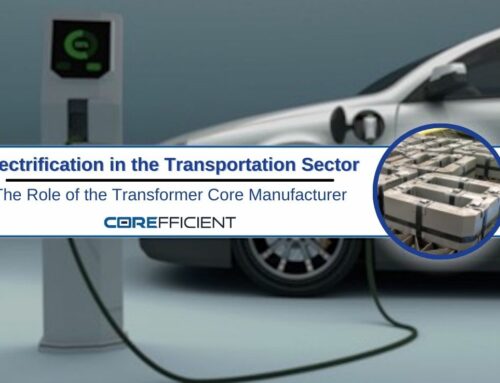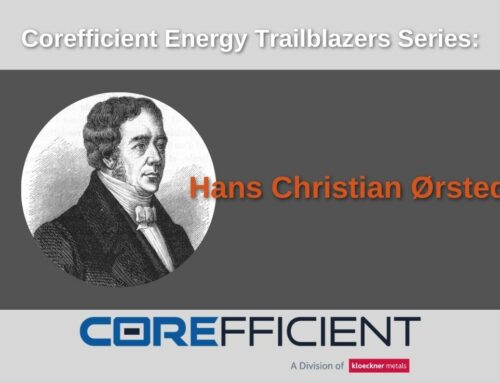
In 2024, the wind energy industry is poised for significant growth and evolution, bringing forth exciting developments and trends. Anticipate innovations in turbine technology and novel approaches to storing wind energy. These will be key drivers in shaping the landscape of the industry. Leave it up to the leading transformer core expert to give you the top wind energy trends that will unfold and redefine the wind energy sector in the coming year.
Technip’s Vertiwind Project
In 2011, the French government supported the launch of Technip’s Vertiwind project. It was to test a pre-industrial prototype of a vertical-axis offshore floating wind turbine. However, technical and financial difficulties led to the project’s abandonment in 2016. Technip then merged with FMC Technologies in 2017 to form TechnipFMC.
TechnipFMC and Technip Energies are two independent, publicly traded companies created by the spin-off of TechnipFMC in February 2021. They each have different focuses and scopes of activities in the energy industry. Both companies have current projects relating to wind turbines. TechnipFMC is leading the InSPIRE project with Bombora to combine floating offshore wind and wave energy. Technip Energies has acquired a 16.3% stake in X1 Wind, a renewable energy startup with an innovative offshore wind turbine floater design. Technip Energies will bring its engineering capabilities and offshore project execution. In addition, they bring industrialization know-how to support X1 Wind’s management and carry the concept to commercial application.
WindFloat: The Rapid Rise of Floating Wind Turbines

Image Attribution: https://www.edp.com/en/innovation/windfloat
WindFloat is another top wind energy trend that is up and coming in the year 2024. Wind-power collaborative Windplus is developing a semi-submersible platform called WindFloat that addresses the issue of anchoring offshore wind turbines. Unlike traditional offshore wind turbines, WindFloat uses a drag-embedment anchor that supports the turbine without any construction on the seafloor. WindFloat’s platform and turbine are assembled on land, reducing installation costs. Current technology relies on ocean-based assembly, which is more unstable and logistically complex. This allows the affordable installation of more giant turbines than those currently producing offshore power.
WindFloats are already in use off the coast of Portugal. Additionally, plans for installation off the coast of Oregon are moving forward. This project has been green-lighted partly by new development grants from the European Union and the United States.
The project has sufficient funding to refine the design and conduct additional real-world testing. Innovative solutions like WindFloat have the potential to significantly increase the feasibility of wind energy as a clean, affordable power source.
Windspire

Image Attribution: https://newatlas.com/windspire-low-cost-wind-power-alternative/10861/
Windspire wind turbines offer an economical, low-noise, and visually appealing source of wind power that residential, business, and commercial buildings can utilize. The United States manufactures these propeller-free turbines to be 30 feet tall and vertically oriented. Windspire’s patented technology ensures that wind energy is efficiently converted to electric power, irrespective of the changing wind speed and direction.
The Windspire’s unique vertical axis design enables it to operate at a sound level of only 6 decibels higher than the ambient noise, making it almost entirely silent. On average, the Windspire generates 2000 kWh of energy annually at an 11-mph wind speed.
Eddy Turbine
An eddy turbine, or a vortex turbine, is a wind turbine with vertically arranged blades. This design allows the turbine to operate effectively in areas with variable wind directions, making it suitable for urban and residential applications. Unlike traditional horizontal-axis wind turbines, eddy turbines do not require tracking mechanisms to orient themselves toward the wind direction.
One of their most advantageous applications is on urban rooftops, where traditional wind turbines may not be suitable due to unpredictable wind directions. Additionally, their low-noise operation makes them an attractive option for residential areas. Another critical application for eddy turbines is in remote locations with variable wind directions and limited grid access. These turbines can generate reliable power in regions with unavailable traditional power sources.
Transforming the Future of Energy
The Wind Energy Technologies Office (WETO) collaborates with industry partners to enhance wind technologies, reduce the cost of wind energy, and facilitate the integration of wind energy with the electric grid. Some of the critical achievements of WETO include the following:
- Wind turbine technology has evolved, resulting in longer, lighter rotor blades, taller towers, more reliable drivetrains, and performance-optimizing control systems.
- The United States is financing research on offshore wind technologies that can harness wind resources from the coasts and produce electricity.
- The Atmosphere to Electrons (A2e) initiative is receiving support to enhance wind power plant design and operation through advanced modeling, simulation, and measurement techniques.
- DOE laboratories and research institutions are making their wind energy technologies available for licensing through the Energy Innovation Portal.
- Wind energy stakeholders can use funding opportunities, peer reviews, market reports, and educational resources.
WETO has helped to increase the average capacity factor of wind turbines from 22% to 35% and reduce the cost of wind energy from over 55 cents per kilowatt-hour to under 3 cents per kilowatt-hour. The office has achieved this by developing longer blades, taller towers, more reliable drivetrains, and performance-optimizing control systems, as well as by improving the performance and reliability of wind turbine components. WETO has also partnered with industry to develop and test numerous prototype technologies.
Discover How Technological Advancements Could Unlock 80% More Wind Energy Potential in the U.S.
Recent technology innovations in wind energy can unlock 80% more economically viable wind energy capacity in the contiguous United States. This potential wind energy is available in regions of the United States with little or no existing wind farm deployment, potentially reducing the need for new transmission to deploy wind energy at the scale needed to meet renewable energy goals.
Innovative wind energy technology includes longer blades, segmented blades, taller towers, low-specific-power wind turbines, advanced tower manufacturing techniques, and climbing cranes. Additionally, wake steering technology uses controls that tilt or turn the direction a wind turbine faces and adjust generator speed. This can increase annual energy production gains by 1% to 2% in existing facilities.
Harnessing wind power with Corefficient transformer cores

Wind turbines transform wind’s kinetic energy into electricity, which households and businesses can use directly. The conversion of kinetic energy into electricity hinges on transformer cores for efficient energy transformation. This pivotal role underscores the significance of transformer cores in electrical transformers.
There are different kinds of transformer cores, such as DG cores, step lap full mitre cores, and more. These cores step up or down the voltage of the electrical energy, thus making it suitable for transmission and distribution.
Corefficient’s Commitment
Corefficient is committed to producing efficient transformer cores for energy innovation. Their transformer core manufacturing and design reflect their focus on energy-efficient cores. Corefficient’s transformer cores ensure that transforming the electricity from wind turbines is done as efficiently and cost-effectively as possible, thus improving transformer efficiency.
Testing is the cornerstone of Corefficient’s quality control process, and there is no compromise. They meticulously test every production stage to ensure the transformer cores become a significant asset in energy innovation. Corefficient’s quality control process is unmatched in the industry, ensuring that every product that leaves their factory is of the highest quality. When you choose Corefficient, you can be confident that you have made the right choice for energy-efficient transformer cores.
More about Corefficient
Based out of Monterrey, Mexico, Corefficient is the leading transformer core company committed to adding value to its transformer core products. Their experience and success in transformer core engineering, transformer core design, magnetic core expertise, hot and cold rolled steel, grain-oriented steel, electrical steel, and – most importantly – customer service – have made Corefficient a valued leader in energy efficient transformer core manufacturing.
Visit Corefficient online at corefficientsrl.com, contact our North American sales engineer at 1 (704) 236-2510 or call us directly in Monterrey, Mexico at (81) 2088-4000.







